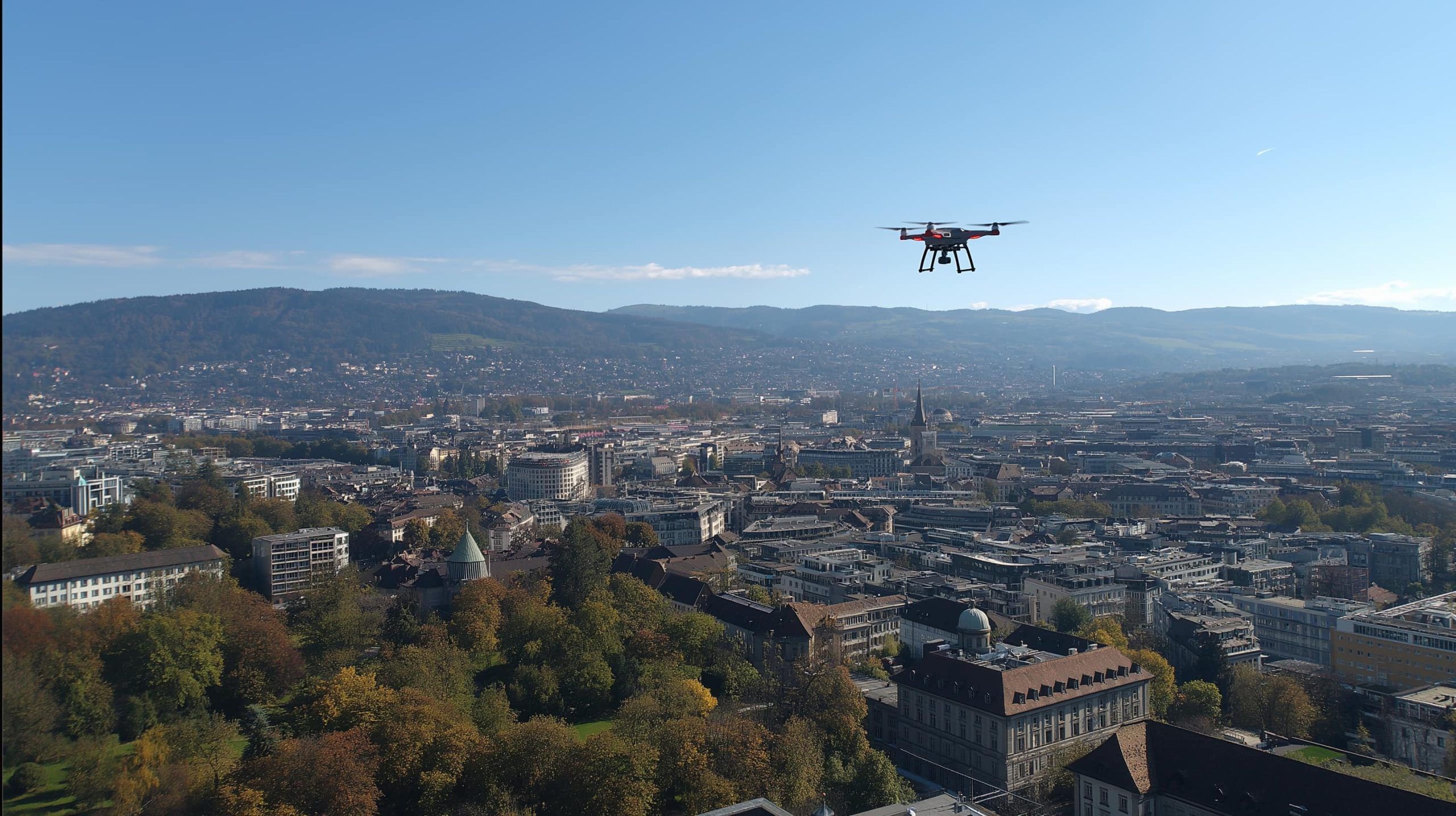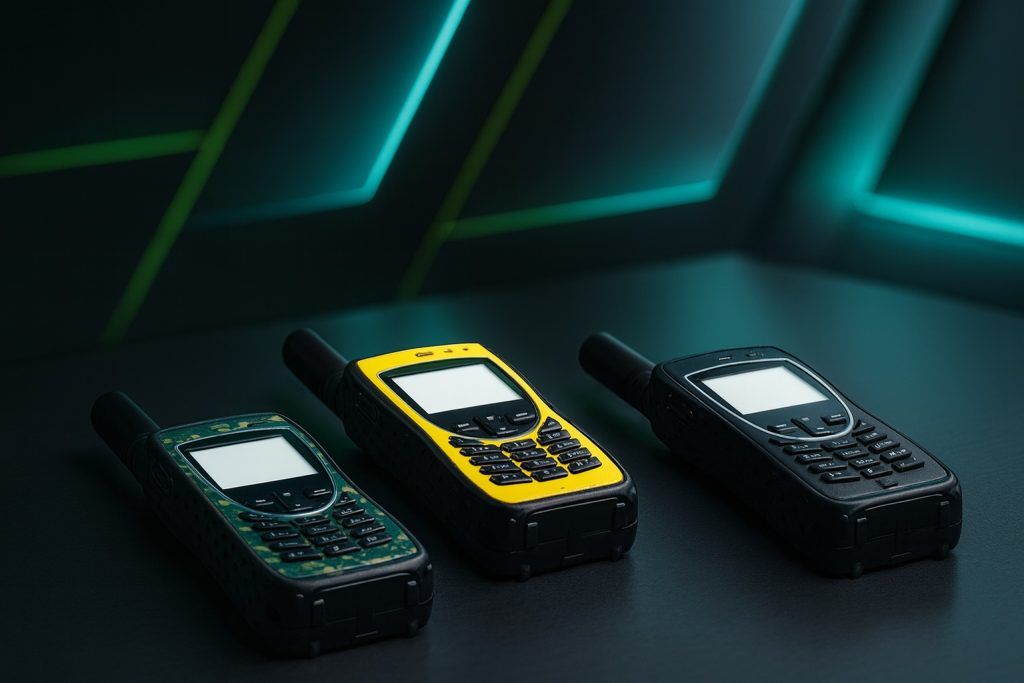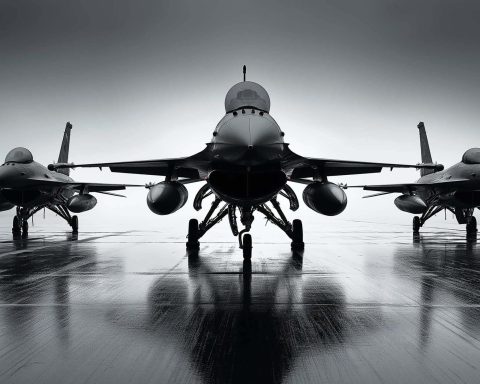- Zurich follows Swiss federal drone law under FOCA; there are no separate Zurich drone laws, though local rules may restrict use near parks, events, or sensitive sites such as the Kasernenareal.
- There is no distinction between recreational and commercial drone use in Switzerland; both follow the same rules, including registration, pilot testing, insurance, altitude limits, and no-fly zones.
- Drones with cameras or weighing 250 g or more must be registered in FOCA’s UAS operator database, yielding an operator ID such as CHEXXXXXXXX that must be visibly affixed to the drone.
- Drones 250 g or more require an online A1/A3 basic competency certificate, and larger drones or close-to-people operations require an A2 certificate with additional testing.
- The minimum age to pilot a drone in Switzerland is 12 years old, with younger children allowed only under supervision by an adult who holds a competency certificate.
- Open-category flight is limited to 120 meters above ground, with direct visual line of sight and FPV flight allowed only with a spotter; beyond-visual-line-of-sight is not permitted in the open category.
- There is a 5 km no-fly zone around Zurich Airport, with additional altitude limits in controlled airspace; check FOCA’s drone map and obtain ATC permission when needed.
- Liability insurance is mandatory for drones ≥250 g, with minimum CHF 1,000,000 coverage; carry proof while flying.
- Penalties can reach up to CHF 20,000 fines and possible imprisonment; enforcement is by FOCA and local police, with incidents requiring reporting to FOCA and the Swiss Transportation Safety Investigation Board.
- Official resources include FOCA’s Fly Drones Safely guide, FOCA interactive drone map, the UAS registration portal, Skyguide flight-permission forms, and Zurich’s filming-permit guidance.
Zurich is a drone-friendly city, but pilots must navigate a strict legal framework that blends Swiss federal rules with local restrictions. Below we break down the 10 key aspects of drone law in Zurich, Switzerland, from basic regulations to upcoming changes. Before you take off in Zurich, make sure you understand these rules – fines can reach CHF 20,000 or even jail time for violations [1].
1. Legal Framework: Swiss Federal Law vs. City Regulations
Switzerland’s federal drone laws apply in Zurich, with the country having adopted the EU-wide drone regulations in 2023 [2]. This means Zurich follows the national rules set by the Federal Office of Civil Aviation (FOCA) and the Swiss aviation law. There are no separate “Zurich drone laws” – aviation safety is regulated at the federal level. However, local authorities can impose additional rules to protect people or sensitive areas [3] [4]. For example, the City of Zurich has a municipal ordinance for model aircraft over public land. This ordinance requires that drones (and all model aircraft) must be operated without endangering life, health or property of others, and it defers to higher federal law (FOCA regulations) for specifics [5]. In practice, this means Zurich may restrict drone use in certain locations or scenarios (parks, events, etc.), but those restrictions complement rather than replace the federal rules.
Bottom line: if you fly a drone in Zurich, assume Swiss federal law applies. Check for any canton or city-specific bans on flying in particular areas (for instance, flying near the police/military barracks “Kasernenareal” or other sensitive sites is prohibited) [6]. Always verify local notices – but the core rules are set by FOCA and Swiss aviation regulations.
2. Recreational vs. Commercial Use – Same Rules for All
One notable feature of Swiss drone law is that it does not distinguish between recreational (hobby) and commercial drone operations [7]. Whether you fly for fun or for business, the same fundamental rules apply. There is no special license or permit just for commercial flying – Switzerland’s regulations are “purpose-blind.” As FOCA explains, the law focuses on how and where you fly (risk category, weight, etc.), not why you are flying [8].
In practical terms, a tourist with a camera drone and a professional aerial photographer have identical obligations: both must register as operators, pass any required pilot tests, follow the same altitude limits, avoid no-fly zones, carry insurance, etc. [9] [10]. There is no separate “commercial drone license.” This streamlined approach keeps things simple [11].
However, note that commercial activities on public land (like filming for a movie in a city park) may trigger permit requirements from local authorities. The City of Zurich, for instance, requires a permit to use public ground for professional photo/filming if certain conditions are met (e.g. shoots over 1 hour, with crews larger than 5 people, use of equipment) [12] [13]. This applies to drone filming as well – it’s about use of public space rather than the drone itself. So, while aviation law treats hobbyists and businesses the same, commercial drone users might need additional local permits for specific activities (such as filming on city property) [14]. Always check with the City of Zurich if you plan a commercial drone shoot on public land.
3. Registration and Licensing Requirements
Most drone operators in Switzerland (including Zurich) must register with FOCA. Since 2023, Switzerland introduced a mandatory online registration system aligned with EU rules [15] [16]. All drones with a camera or weighing ≥250 g must be registered in the FOCA UAS operator database [17]. (Drones under 250 g with no camera are the only exception, meaning virtually everyone with a modern drone needs to register, since even tiny drones often have cameras [18].) Registration is done via FOCA’s online portal (sometimes called UAS.gate/dLIS) and is quick – you provide your details and get a unique Operator ID number (format “CHEXXXXXXXX”). This ID must be affixed on your drone in a visible spot [19] [20]. Flying an unmarked drone can lead to fines [21], so label your drone with the ID. (Only the operator is registered – you don’t register individual drones separately; one ID covers all your drones [22].) Currently, registration carries a small administrative fee (about CHF 10) [23] and requires a Swiss CH-Login account.
Pilot Licensing: In Switzerland there isn’t a traditional pilot “license,” but you must pass an exam to get a competency certificate for drones above certain weight categories. Specifically, if your drone weighs 250 g or more, you are required to complete an online training and pass a basic exam (EU category A1/A3) [24]. This is a multiple-choice theory test on safety, airspace, and regulations. It typically takes a few hours of study, and a 75% score is needed to pass [25]. Upon passing, you receive a Remote Pilot Certificate (valid 5 years) that is recognized in all EU countries as well [26]. For larger drones or riskier operations, additional certification is needed: if you intend to fly a drone over 900 g in close proximity to people or in category A2 conditions, you must pass a more advanced exam (the A2 theory test) which includes an in-person supervised component [27]. In short:
- <250 g drones: No pilot exam required (but still must register if equipped with a camera).
- ≥250 g drones:A1/A3 basic certificate required (online test).
- Larger drones (≈0.9 kg to 4 kg) or closer flights (A2 subcategory):A2 certificate required (additional exam, often in person) [28].
- Heavier drones (>25 kg): Not allowed in the open category; require a special FOCA authorization (specific category) – see below.
Age requirement: You must be at least 12 years old to pilot a drone in Switzerland [29]. (Younger children can only fly under the supervision of an adult who holds the competency certificate.)
4. Flight Restrictions: Altitude Limits and No-Fly Zones
Drone pilots in Zurich must adhere to strict limits on where and how high they can fly. Key flight restrictions include:
- Altitude Limit:120 meters (≈400 ft) above ground is the maximum legal flight altitude [30] for standard drone operations. (This was reduced from 150 m under the new EU-aligned rules.) You cannot fly higher than 120 m AGL without special permission. Your drone should have an altitude limiter or you must monitor altitude carefully.
- Visual Line of Sight (VLOS): You must maintain direct visual contact with your drone at all times [31]. Flying via FPV (first-person view) goggles alone is not permitted unless a second person is present as a spotter to keep the drone in sight. Essentially, no beyond-visual-line-of-sight flying in the open category.
- No Overflight of People: It is strictly forbidden to fly over assemblies of people [32]. An “assembly” generally means any large group where people are crowded together (e.g. a concert, festival, protest, busy street or plaza). Zurich regularly enforces this rule – for example, during the 2023 Züri Fäscht festival, police noted dozens of drones illegally over crowds (and took action against pilots) [33]. Even small drones must avoid flying above or directly over people who are not involved in the drone operation [34]. You should also keep a safe horizontal distance from bystanders (the exact distance depends on your drone’s class/category: larger drones require tens of meters distance).
- Airport and Airspace Restrictions: Zurich is near a major international airport (ZRH). Drone flights are banned within a 5 km radius of any civil or military airport/airfield without special authorization [35]. Around Zurich Airport, there is a 5 km no-fly zone for drones [36] – do not fly in this zone at all unless you have explicit permission from air traffic control. Beyond 5 km but still near the airport, or within controlled airspace (CTR), additional altitude limits apply. (In controlled zones, drones are typically allowed only up to 120 m and may require coordination with ATC.) Always consult the official drone airspace map before flying near Zurich; Skyguide (Swiss ATC) can grant exceptions in some cases via a permit, but casual flyers should simply stay well clear of the airport vicinity.
- Other No-Fly Zones: Switzerland designates various geographical no-fly zones that also apply in Zurich. According to FOCA, the interactive drone map highlights restricted areas such as [37]:
- Prisons and Penal Institutions: No drones over prison facilities (to prevent drops or surveillance) [38].
- Hospitals with Helipads: Caution around hospitals – while not outright banned, treat hospital heliports like airports and keep distance for emergency flights [39].
- Nature Reserves and Wildlife Sanctuaries: Many protected natural areas (bird sanctuaries, national parks) prohibit drones to avoid disturbing wildlife [40]. For example, waterbird reserves around Lake Zurich and other habitats are off-limits to drones (enforced by environmental laws).
- Military Zones: No flying over military bases, training areas, or the military barracks (e.g., the Kasernenareal in Zurich) [41]. Military sites are sensitive and often explicitly banned airspace.
- Critical Infrastructure: Drones are restricted near nuclear power plants, and certain energy or gas utility installations [42] for security reasons.
- Other Sensitive Sites: Government buildings aren’t generically off-limits, but use common sense. For instance, flying a drone around legislatures, embassies, or police facilities will attract attention and could be restricted by temporary security NOTAMs.
Before flying, always check the FOCA “drone map” for Zurich [43]. This online map (map.geo.admin.ch) shows current no-fly zones and areas with altitude or permit restrictions. It is updated with temporary notices (NOTAMs) too, so if there’s a special event or security operation, a normally allowed area might be closed off [44]. Ignorance is no excuse – as a pilot you must research the airspace before each flight [45].
In summary, keep your drone below 120 m, within sight, away from airports, and far from people and sensitive areas. Zurich offers beautiful cityscapes to film, but many dense urban areas will be off-limits if people are around – plan your flights in open areas and abide by the maps and signage.
5. Liability Insurance Requirements
Liability insurance is mandatory for drone operators in Switzerland when flying anything but the very lightest drones. Under Swiss law, if your drone weighs 250 g or more, you must have a third-party liability insurance policy with at least CHF 1 million coverage [46]. This insurance is to cover any damage or injury your drone might cause to others. You should carry proof of this insurance while flying, as authorities could ask for it.
In practice, many home insurance or personal liability policies can extend to drone usage, or you can purchase a specific drone liability policy. The key is the minimum CHF 1 million coverage requirement. (Under the previous Swiss rules, the threshold was 500 g, but with the new EU-aligned regulation it’s been lowered to 250 g to include more drones.) Even if your drone is lighter, it’s highly recommended to have insurance [47] – accidents can happen even with tiny drones (for example, crashing into a parked car or injuring someone’s pet).
Note: Insurance is not just bureaucratic – it’s for your own financial protection. If your drone causes an accident in Zurich (say, it falls and injures a person or causes a traffic incident), you as the operator are liable for damages. CHF 1 million sounds high, but serious injuries or collisions can quickly rack up costs. So do not take to the skies without proper coverage. Many European visitors’ travel insurances or global drone insurance plans can cover Swiss requirements – just ensure it explicitly covers drone liability in Switzerland.
6. Required Safety Features and Equipment
Swiss and EU drone regulations impose some requirements (and recommendations) regarding drone equipment and safety features:
- CE Marking: Your drone must have a CE marking (Conformité Européenne mark) to be legally sold/used [48]. This marking signifies the drone meets European safety, health, and environmental standards. Essentially all consumer drones from reputable brands have a CE label. If a drone lacks the CE mark (e.g. a non-certified import), it is not allowed to be flown in Switzerland [49]. Always check for a CE mark on the drone or its packaging [50].
- Class Identification Labels: Newer drones may have a class label (C0, C1, C2, etc.) under the EU system. While older drones without class labels can still be used (under transitional rules), the class label indicates the drone meets certain tech standards (like remote ID capability, noise limits, geo-awareness) for its category [51]. If your drone lacks a class label, you simply operate it in the “transitional” open category with slightly stricter conditions (e.g., larger minimum distances from people) [52]. You cannot self-label a drone’s class unless authorized by the manufacturer [53]. Starting 2024, no new drones can be sold without the proper class certification, but you don’t need to retrofit old drones – just follow the rules.
- Lights for Night Flying: If you plan to fly at night, a green flashing light is recommended on your drone [54]. Swiss rules allow night flights, but the pilot must still keep visual line-of-sight. A bright navigation light helps you maintain sight of the drone in darkness. Many consumer drones have built-in LED lights; ensure they are enabled (a green flashing pattern is suggested by FOCA) [55]. Without proper lighting, you might lose orientation or violate VLOS at night, so this is a crucial safety step. Also remember that even at night, you must scan the airspace for other aircraft – you may need to fly lower than 120 m at night if visibility is an issue [56].
- Geo-fencing and GPS: Swiss law does not explicitly mandate geo-fencing, but drone pilots are expected to respect geo-zones and restrictions. Most modern drones (DJI, etc.) come with GPS-based geo-fencing that warns or prevents you from entering no-fly zones or exceeding altitude limits. Enable these features when flying in Zurich—they can prevent inadvertent violations (like straying into the airport zone or flying too high). Geo-fencing is not a get-out-of-jail-free card (the pilot is always responsible), but it’s a helpful tool. Some advanced class C1–C3 drones are required by EU standards to have geo-awareness systems, which means the drone can receive official geo-zone data and warn the operator.
- Remote Identification: Under EU/Swiss regulations, drones are gradually implementing Remote ID – a feature that broadcasts the drone’s operator info. For now, Swiss law requires you to mark your operator ID on the drone itself (sticker or engraving) [57] [58], but in the future or with certain drone models, this ID might also be broadcast electronically during flight. If your drone has a Remote ID module, make sure to input your operator number into it as instructed [59]. This helps authorities identify drones in the air. Remote ID will likely become more important in coming years, but as of 2025, the primary requirement is the physical marking of your ID.
- Miscellaneous Equipment: It’s advisable (though not legally required) to have a fire-safe LiPo battery bag for transport/storage of drone batteries, a first-aid kit for any minor injuries, and a high-visibility vest if you’re operating in an area where you want to be seen as the drone operator. Also, if you fly FPV (with goggles), you must have a second person as a spotter – so an extra set of eyes is essentially “required equipment” for FPV enthusiasts.
Finally, always ensure your drone is well-maintained: check propellers for damage, firmware updated (especially to have latest geo-zone data), and calibrate your compass/IMU. Safe equipment and a prepared pilot are legal musts – Swiss law says you should only fly if your drone is in condition to not endanger anyone [60].
7. Enforcement and Penalties
Who enforces drone laws in Zurich? Primarily, FOCA is the regulating authority for aviation laws, and they have the power to prosecute violations of the Federal Act on Civil Aviation [61]. However, on a day-to-day level, local police handle drone complaints and incidents. There isn’t a special “drone police,” so if someone flies recklessly or illegally, people are advised to report it to the police [62] [63]. Zurich’s city police (Stadtpolizei) can intervene, issue fines or report the matter to FOCA for further action.
Penalties for breaking drone laws can be severe. Unlike traffic offenses, Switzerland doesn’t have a set fine schedule for each drone infraction – penalties are decided case-by-case by authorities or the courts [64]. The law provides for fines up to CHF 20,000 for serious violations [65], and in extreme cases even imprisonment (for example, if a drone endangers lives, one could be charged under broader public safety laws). Additionally, FOCA can require you to undergo additional training or can suspend/revoke your drone pilot certificate for egregious breaches [66].
In Zurich, there have been instances of enforcement: e.g., during major events like the Street Parade or Züri Fäscht, police have actively looked for illegal drones. In one 2023 festival, dozens of unauthorized drones were found over crowds and the police could only catch a few pilots – those caught are now facing legal complaints (Verzeigung) [67]. Typically, if you are caught, the drone might be confiscated as evidence and you could be fined or charged later. Flying over people or in no-fly zones (like near the airport) is likely to get an immediate police response, including potential drone interception or jamming in high-security situations.
Which authorities are involved?
- FOCA: oversees registrations, authorizations (for special flights), and can initiate legal proceedings for violations.
- Local Police: first responders to drone incidents; they can issue fines under local public safety ordinances or file reports for prosecution.
- Skyguide (Air Traffic Control): monitors airport airspace; if a drone is detected near Zurich airport, ATC and police will coordinate to find the operator. Skyguide also handles special flight permission within 5 km of airports [68].
- Data Protection Authorities: if privacy laws are violated by drone (e.g. illegal surveillance), the Federal Data Protection Commissioner or cantonal data protection officer could get involved alongside police.
In general, Swiss enforcement relies on a combination of education and strict penalties. FOCA’s #FlyDronesSafely campaign educates pilots, but they make clear that breaking drone laws is a punishable offense just like breaking traffic laws [69]. If you witness someone flying dangerously in Zurich, you are encouraged to inform the police [70]. And as a pilot, if you have an incident (like a crash that injures someone or a near-collision with a manned aircraft), you are required to report it to authorities (the Swiss Transportation Safety Investigation Board and FOCA) [71] [72].
Summary: Fly responsibly, because enforcement is real. Stay within the rules and you won’t have any problems – but if you flout them, you risk heavy fines or worse. Zurich police and FOCA are particularly strict about drones near airports and over crowds, for obvious safety reasons.
8. Privacy Considerations and Data Protection
Flying a drone in Zurich isn’t just about aviation law – you must also respect privacy laws. Switzerland has robust privacy and data protection rules, and these absolutely apply to drone usage:
- Federal Act on Data Protection (FADP): If your drone is equipped with a camera (which most are), any footage or photos you take could potentially collect personal data (people’s faces, license plates, private activities). All such data is protected by the FADP [73]. In essence, you should treat a drone camera like any other camera: you cannot spy on people or record individuals in a way that violates their “right to privacy” (Privatsphäre) and personality rights. For instance, filming someone in their backyard or through their window without consent is illegal.
- Consent for Recording: It is highly recommended (and often legally required) to obtain consent from individuals if you will capture identifiable images of them with your drone [74] [75]. If you are flying over a residential area, let your neighbors know in advance and avoid filming their property without permission [76] [77]. Swiss experts advise a “gentlemen’s agreement” approach: communicate with people nearby about what you’re doing [78] [79]. For public places, understand that people have an expectation of privacy even in public to some extent – e.g., zooming in on someone’s face in their garden or on a private balcony from a drone is a no-go.
- No Snooping or Surveillance:Surveillance of individuals with a drone is prohibited. Using drones to follow people, track someone’s movements, or capture intimate moments (paparazzi-style) can lead to criminal charges (like breach of secrecy or privacy). There have been cases in Switzerland of neighbors complaining about drones peering into gardens. The law is on the side of the resident: flying over private property without permission can be considered trespassing or nuisance unless you stay high enough and don’t film. A good rule of thumb is do not fly low over others’ homes or yards at all without permission.
- Publishing Drone Footage: Even if you legally capture aerial footage, be careful about what you publish online. If people are clearly identifiable in your shots, you should blur faces or get consent. Swiss personality rights allow individuals to control the use of their image. Posting an aerial video of a crowd in which certain people are recognizable could lead to complaints if they did not consent. Also, avoid revealing someone’s address or sensitive installations in detail.
- Specific Zones for Privacy: Some areas in Zurich might be particularly sensitive. For example, around schools or hospitals, while not explicitly forbidden, one should be extra cautious not to film children or patients. Always err on the side of caution – if someone approaches you and asks you to stop filming them or their property with a drone, it’s wise (and polite) to comply immediately.
- FOCA and Data Protection Guidance: FOCA has noted that any drone with a camera is basically capable of personal data collection, hence the registration requirement [80]. The Swiss data protection authority (EDÖB) has issued guidelines specifically addressing drone use and privacy [81]. Key points include respecting the “highly personal sphere” of individuals (e.g., not intruding on someone’s fenced yard) and minimizing data collection (don’t record more than necessary). It’s recommended to read those guidelines if you plan on doing extensive photo/video work with your drone.
In summary, Zurich drone pilots must be as mindful of privacy as they are of airspace rules. Many drone laws (no flying over crowds, etc.) are partly for privacy as well as safety. If you follow common-sense etiquette – don’t hover over strangers, don’t snoop on private property, get permission when needed – you should be fine. But if you misuse your drone to invade privacy, you can face legal action (fines or civil lawsuits). Switzerland values individuals’ rights highly, so flying respectfully is not just courtesy, it’s the law.
9. Recent and Upcoming Legal Changes
Drone regulations in Switzerland (and by extension Zurich) have undergone major changes recently, and more tweaks are on the horizon:
- EU Harmonization in 2023: The biggest change was that as of January 1, 2023, Switzerland adopted the core of the EU Drone Regulations [82]. This introduced the registration and pilot testing requirements for almost all drone users, the new categorization of operations (Open, Specific, Certified), a uniform 120 m altitude limit, and the ban on flying over assemblies of people in the Open category [83] [84]. It marked a shift from Switzerland’s older weight-based rules to a risk-based approach similar to EU countries. If you flew in Zurich prior to 2023, note that rules like mandatory registration or the 120 m ceiling might not have applied back then – but they do now.
- Transitional Period for Older Drones: With the new EU-style rules, drones are supposed to have class labels (C0–C4, etc.). Switzerland has a transitional category that allows older drones (bought before 2024 without class marking) to continue to be flown without issue [85]. Initially, the transitional provisions were set to phase out by end of 2023, but authorities have clarified that the transitional category will remain in place beyond 2024 [86]. Practically, this means if you have a trusty drone from 2019 with no class label, you can keep using it under the Open A1/A3 rules (or A2 if applicable) – you just follow the slightly stricter distances that apply to non-labeled drones. There is no hard cutoff date in 2024 that suddenly grounds old drones, which is good news for hobbyists.
- Remote ID Implementation: Starting January 2024, new drones in Switzerland (and EU) must have built-in Remote ID broadcasting. This was an EU requirement that Switzerland also follows. Existing drones without Remote ID can still be used under the transitional rules. Upcoming change: After January 1, 2024, it became illegal for manufacturers to sell non-compliant drones on the Swiss market [87]. For pilots, this mostly affects what new models you buy. By 2025, many pilots might start using drones with Remote ID, and authorities could have receivers to pick up drone IDs in busy areas. Always update your drone’s firmware to comply with any new Remote ID standards and ensure you register your ID with the device if needed.
- Model Aircraft Clubs: One reason Switzerland delayed EU rules until 2023 was to figure out how to accommodate traditional model aircraft clubs. Recent legal updates have introduced the concept of authorized zones or clubs for model flying. If you fly at an approved model airfield under a model club’s oversight, some rules (like registration or certain distance rules) might be relaxed under specific exemptions. FOCA may designate “geographical zones” for modelers. If you’re part of a Zurich-area model flying club, check with them on any special permissions. For casual drone users, this likely doesn’t affect you, but it’s a development to be aware of if you see news about “model aircraft exception” in Swiss drone law.
- Future EU Alignments: Switzerland closely follows EASA (European Union Aviation Safety Agency) developments. Any upcoming EU drone regulation changes are likely to be adopted by Switzerland to keep compatibility. This could include updates on drone delivery rules, “U-space” traffic management, or new categories. Keep an eye on FOCA announcements for any new rules. As of mid-2025, no major new laws have been announced beyond the 2023 framework – the focus is on enforcing the current rules and gradually introducing new technology like remote ID.
- Local (Zurich) Changes: On the city level, Zurich might introduce specific bylaws if drone issues arise. For example, if there were persistent drone problems at a particular public event or area, the city could enact a ban or permit requirement for that zone. Recently, we saw Zurich’s sports department issue guidelines in 2023 for drone flights over city sports facilities (requiring a permit and adherence to FOCA rules) [88] [89]. These are more administrative than law changes, but it shows local authorities adapting to drones. Always check if your planned flight might need a local permit (for filming, or if at a public venue).
In summary, the legal landscape in 2025 is much stricter than a few years ago, but also clearer and standardized. The recent changes (registration, exams, 120 m limit) brought Switzerland in line with Europe. Upcoming changes are expected to be incremental – primarily technological (remote ID) and integration of drones into the airspace (U-space, etc.). If you stay informed via FOCA’s website or news from the City of Zurich, you’ll be prepared. The good news is that if you follow the current rules, you’re likely already compliant with any near-future tweaks.
10. Official Resources and Useful Links
For the most accurate and up-to-date information, make sure to consult these official sources related to drone regulations in Zurich/Switzerland:
- FOCA – Federal Office of Civil Aviation (Switzerland): FOCA’s website has a dedicated drones section with guides and FAQs. Start with FOCA’s “Fly Drones Safely” guide [90] and the FOCA drone FAQ page [91] [92]. (Website: bazl.admin.ch, available in English/German/French/Italian.)
- FOCA Interactive Drone Map: An online map showing no-fly zones and restrictions across Switzerland, including Zurich. This is essential for planning flights [93] [94]. (Search “FOCA drone map” or visit map.geo.admin.ch with the drone layer.)
- UAS Registration Portal (UAS.gate/dLIS): The official portal to register as a drone operator with FOCA and to take online exams. You can find the link through FOCA’s site [95] [96]. Registration requires a CH-Login. (Tip: The English registration page is on FOCA’s site under “Registering (dLIS)”.)
- Skyguide – Drone Flight Permissions: If you need to fly near an airport or in controlled airspace (within 5 km of Zurich Airport), Skyguide is the air traffic control authority to contact. They provide a special flight request form for drone operations near airports [97]. See skyguide.ch for their drone/U-space information.
- City of Zurich – Filming Permit Info: For commercial or professional use of drones on public land in Zurich, see the city’s page on Photo/Film Shoots on Public Ground [98] [99]. It outlines when you need a permit and how to apply (usually at least 4 weeks in advance through the city’s “Bewilligung Gewerbe” office). (Website: stadt-zuerich.ch, search for “Fotoaufnahmen Bewilligung”.)
- Zurich Police (Stadtpolizei) – Drone Guidelines: The Zurich city police have published safety tips or Merkblatt in the past. One such document (referenced by legal blogs) stresses not endangering others and the insurance requirement [100] [101]. You can inquire with Stadtpolizei Zürich or check their website/news for any current public guidance on drones.
- Swiss Federal Data Protection Commissioner (EDÖB): They provide guidance on drone usage and privacy. Refer to the EDÖB’s website for recommendations on protecting privacy when using drones [102] [103]. It’s available in multiple languages (German: edoeb.admin.ch).
- Drone Associations and Information Hubs: The Swiss Drone Association (Schweizerischer Verband Ziviler Drohnen) has info on regulations [104]. Additionally, the FOCA-recognized site ch.ch (a Swiss government info portal) summarizes drone rules in plain language [105] [106]. These can be helpful for quick reference.
- Legal Texts: If you need the letter of the law: the Verordnung über Luftfahrzeuge besonderer Kategorien (VLK) is the Swiss ordinance covering drones/model aircraft, and the Luftfahrtgesetz (LFG) is the aviation act. FOCA’s site provides links to relevant law texts [107], including the Federal Data Protection Act [108] and ordinances on nature reserves (pertinent to drone bans in those areas).
Before flying, it’s wise to review these sources. Regulations can update, and official websites will have the latest. When in doubt, contact FOCA or the City of Zurich for clarifications or permissions. By staying informed and following the rules, you can enjoy flying your drone over Zurich’s stunning scenery without any legal turbulence. Safe flying!
Sources:
- Swiss Confederation – ch.ch official portal: “Flying drones in Switzerland (EU regulations from 2023)” [109] [110] [111]
- Federal Office of Civil Aviation (FOCA) – Drone Regulations FAQ [112] [113] [114] and Flight Restriction Info [115] [116]
- City of Zurich – Official Regulations: Municipal ordinance on model aircraft (2015) [117] and Filming Permit Guidelines [118] [119]
- News sources: Blue News (Keystone-SDA) report on Züri Fäscht drone violations [120]; SRF News on drone privacy in neighborhoods [121] [122]; Steiger Legal blog on Swiss drone law (overview of rules and city requirements) [123] [124].
References
1. www.ch.ch, 2. www.ch.ch, 3. www.ch.ch, 4. steigerlegal.ch, 5. www.stadt-zuerich.ch, 6. www.hellozurich.ch, 7. www.bazl.admin.ch, 8. www.bazl.admin.ch, 9. ts2.tech, 10. ts2.tech, 11. ts2.tech, 12. www.stadt-zuerich.ch, 13. www.stadt-zuerich.ch, 14. steigerlegal.ch, 15. www.ch.ch, 16. www.ch.ch, 17. www.ch.ch, 18. www.ch.ch, 19. www.bazl.admin.ch, 20. www.bazl.admin.ch, 21. www.bazl.admin.ch, 22. www.bazl.admin.ch, 23. www.bazl.admin.ch, 24. www.ch.ch, 25. www.ch.ch, 26. www.ch.ch, 27. www.ch.ch, 28. www.ch.ch, 29. www.ch.ch, 30. www.ch.ch, 31. www.ch.ch, 32. www.ch.ch, 33. www.bluewin.ch, 34. www.ch.ch, 35. www.bazl.admin.ch, 36. www.flughafen-zuerich.ch, 37. www.bazl.admin.ch, 38. www.bazl.admin.ch, 39. www.bazl.admin.ch, 40. www.bazl.admin.ch, 41. www.hellozurich.ch, 42. www.bazl.admin.ch, 43. www.bazl.admin.ch, 44. www.bazl.admin.ch, 45. www.bazl.admin.ch, 46. www.ch.ch, 47. www.ch.ch, 48. www.bazl.admin.ch, 49. www.bazl.admin.ch, 50. www.bazl.admin.ch, 51. www.bazl.admin.ch, 52. www.bazl.admin.ch, 53. www.bazl.admin.ch, 54. www.bazl.admin.ch, 55. www.bazl.admin.ch, 56. www.bazl.admin.ch, 57. www.bazl.admin.ch, 58. www.bazl.admin.ch, 59. www.alojapan.com, 60. www.stadt-zuerich.ch, 61. www.bazl.admin.ch, 62. www.bazl.admin.ch, 63. www.ch.ch, 64. www.ch.ch, 65. www.ch.ch, 66. www.ch.ch, 67. www.bluewin.ch, 68. www.bazl.admin.ch, 69. www.bazl.admin.ch, 70. www.bazl.admin.ch, 71. www.bazl.admin.ch, 72. www.bazl.admin.ch, 73. steigerlegal.ch, 74. www.srf.ch, 75. www.srf.ch, 76. www.srf.ch, 77. www.srf.ch, 78. www.srf.ch, 79. www.srf.ch, 80. www.ch.ch, 81. steigerlegal.ch, 82. www.ch.ch, 83. www.ch.ch, 84. www.ch.ch, 85. www.bazl.admin.ch, 86. www.bazl.admin.ch, 87. drohneversichern.ch, 88. www.stadt-zuerich.ch, 89. www.stadt-zuerich.ch, 90. www.ch.ch, 91. www.bazl.admin.ch, 92. www.bazl.admin.ch, 93. www.bazl.admin.ch, 94. www.bazl.admin.ch, 95. www.bazl.admin.ch, 96. www.bazl.admin.ch, 97. www.bazl.admin.ch, 98. www.stadt-zuerich.ch, 99. www.stadt-zuerich.ch, 100. steigerlegal.ch, 101. steigerlegal.ch, 102. www.srf.ch, 103. www.srf.ch, 104. www.drohnenverband.ch, 105. www.ch.ch, 106. www.ch.ch, 107. www.bazl.admin.ch, 108. www.bazl.admin.ch, 109. www.ch.ch, 110. www.ch.ch, 111. www.ch.ch, 112. www.bazl.admin.ch, 113. www.bazl.admin.ch, 114. www.bazl.admin.ch, 115. www.bazl.admin.ch, 116. www.bazl.admin.ch, 117. www.stadt-zuerich.ch, 118. www.stadt-zuerich.ch, 119. www.stadt-zuerich.ch, 120. www.bluewin.ch, 121. www.srf.ch, 122. www.srf.ch, 123. steigerlegal.ch, 124. steigerlegal.ch










